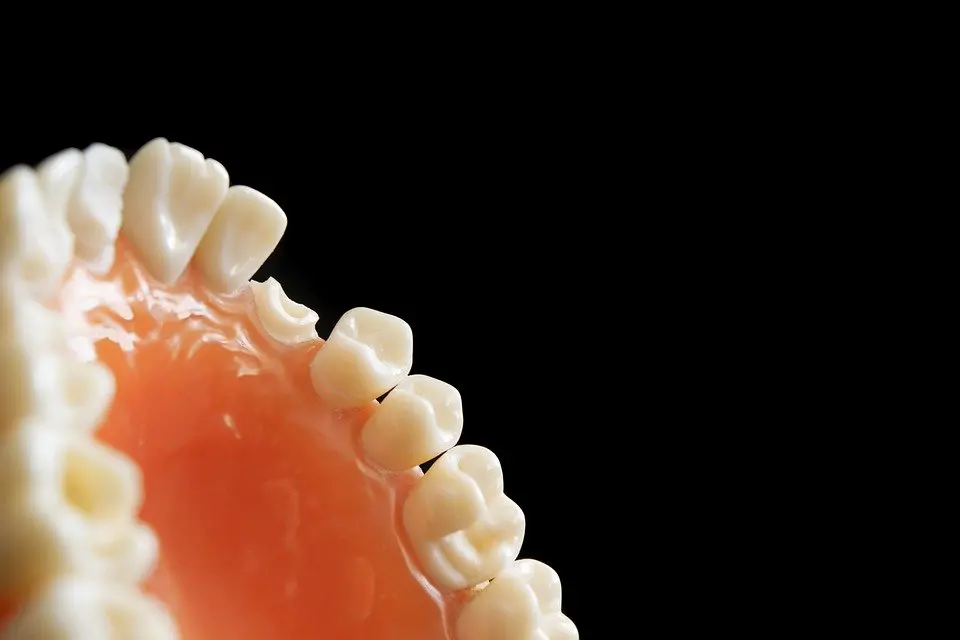We certainly hope that you don’t have experience with a broken or dead tooth, but if you’ve found yourself in that situation, you’ve come to the right place. Whether you recently took a blow to the mouth or just noticed that one of your teeth was a slightly different color than the rest, you may be a little concerned about the long-term effects a dead tooth can have on your overall health.

(Pixabay / huertacs)
Anatomy of a Tooth
To start with, it’s helpful to understand the anatomy of a tooth. Each tooth in your mouth is made up of four parts – cementum, pulp, dentin, and enamel – and they all have important jobs to do. Cementum is an extremely hard tissue that wraps around the base of the tooth right underneath the gums. Its job is to cover up the root and keep the whole tooth in place in the jaw. The pulp is where the root, nerves, and blood vessels are located, and the yellowish, protective material around the pulp is called the dentin. Lastly, the enamel is the hardest substance in your body, and it coats the dentin. Its job is to protect the dentin and pulp from temperature changes, bacteria, and the repetitive grinding and pressure that accompany talking and eating.
One common thought about teeth is that they are bones, but that idea is incorrect. The dentin, enamel, and cementum are as hard as or harder than bone, but they are mostly made of minerals and can’t repair or regenerate the way bones can. That difference can cause problems if a tooth is damaged by trauma or decay.
Why Does a Tooth Die?
Your teeth are considered a living element of your body even though they don’t grow or repair themselves like your bones. The inner pulp has a nerve, and blood vessels are bringing new blood to the area to keep the tooth healthy. When a tooth “dies,” it means that the pulp is no longer receiving blood and other nutrients.
There are a couple of reasons why a tooth might die. If your mouth endures a traumatic event, the blood vessel might burst, which means that the living tissue in the pulp doesn’t get what it needs to stay healthy. Your tooth may die from a singular traumatic event, such as getting hit in the mouth, or you might damage your teeth through sustained trauma, such as grinding your teeth.
Another reason why a tooth might die is because of tooth decay caused by bacteria and poor dental hygiene. Leaving a cavity untreated creates the perfect environment for bacteria to make its way slowly down into your tooth’s pulp. If the decay is bad enough, it can restrict blood flow to your tooth’s nerve to the point that it dies. When that happens, you will probably have a lot of swelling and pain as your body attempts to fight off the infection.
What are the Signs?
Once your tooth dies, it is considered a “non-vital tooth” which means that it is no longer living, not that it is no longer necessary. One sign of a dead tooth is that you may notice a lot of pain and swelling around the affected tooth; but then again, you may not have any pain at all. You may also experience bad breath and a bad taste in your mouth due to an infection festering beneath your gum line.
Another tell-tale sign of a dead tooth is discoloration. The tooth may change from a nice, pearly white to a dark yellow, grey, or brown. This color will become more pronounced the longer it is left untreated, so it’s important to get dental care as soon as possible.
To be 100% sure that a tooth is dead, however, your dentist will need to do an exam and most likely take some X-rays of the affected area.
How Can I Manage the Pain?
Your dentist will know how to combat any pain associated with a dead tooth, but if you can’t get into the dentist right away, there are some things you can do from home. First, stay away from hot, cold, hard or acidic foods to the best of your ability because these foods can intensify any pain that you’re feeling. You can also take acetaminophen or ibuprofen to help with any pain or swelling, and tooth numbing gels and ice packs provide significant temporary relief. When you go to sleep, try propping your head up a little higher than usual to keep the blood from pooling in your head and jaw. Lastly, maintain proper oral hygiene by brushing, gently flossing, and using an alcohol-based mouthwash or a saltwater solution to help dull the pain.
What are the Treatment Options?
If you have a dead tooth, there are some treatment options that your dentist may recommend. He will take into account the extent of the damage as well as your oral hygiene habits when suggesting treatment. If the damage is very little, your dentist might not suggest any action. If the tooth or surrounding gum area is infected, they may want to do a root canal. If your dentist recommends this option, they will make a small hole in the dead tooth and remove the pulp and infection using small dental tools. They will then patch up the hole and place a permanent crown to prevent further infection. If the tooth is too far gone, however, removal may be the only option to keep the rest of your teeth and gums free of infection.
Having a dead tooth is not the end of the world, though it can certainly be inconvenient, unsightly, and painful. The key is to get treatment as soon as you notice a problem, so if you suspect that your tooth is dying or already dead, contact your family dentist immediately.
